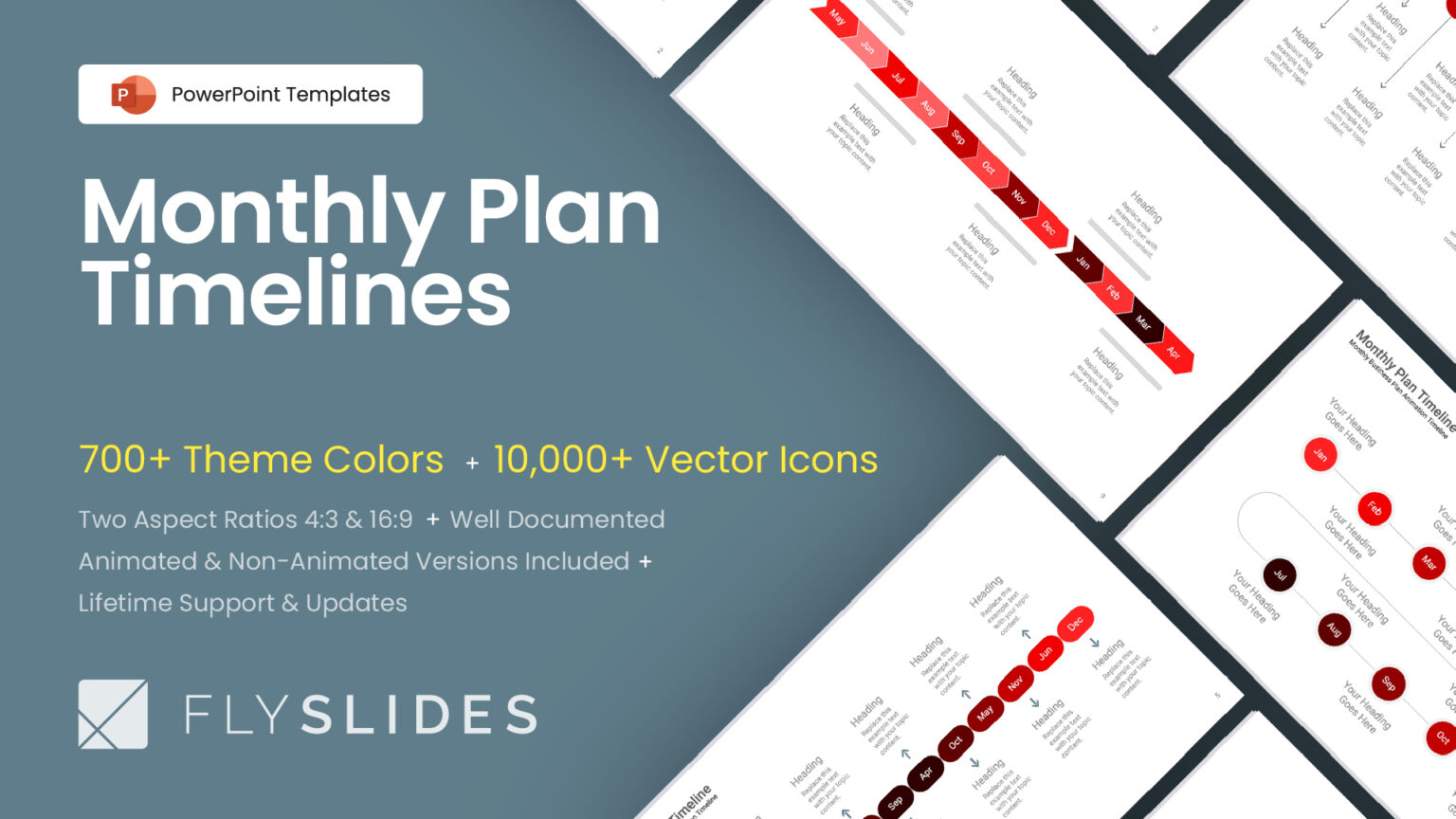Creating a project management timeline can be a challenging task, but it is essential to keep your project on track. By using a few simple steps, you can create a timeline that will help you stay organized. This blog post will discuss how to create a project management timeline, what are the steps involved and provide tips for making the process easier. Let’s get started.
Table of Contents
What Is a Project Management Timeline?
A project management timeline is essential for keeping any project appropriate. It allows managers to see what tasks need to be completed and why they are due. It also provides a clear overview of the project’s overall progress, which can be helpful for identifying potential problems or areas that require further attention.
An effective project management roadmap should be highly detailed and easy to read. It should also be updatable as the project progresses so that managers can always have an accurate view of its status. With careful planning and regular updates, a project management timeline can help keep any project on track and ensure its successful completion.
What Are the Benefits of a Project Timeline?
A project management timeline is an essential tool for any manager. It has many benefits and can be used to keep your team organized, productive & on time with their work responsibilities. Let’s have a look at the main advantages of project timelines.
- Assists in the tracking of progress and milestones.
- Helps with resource allocation.
- Facilitates better communication.
- It helps you stay organized.
- Reduces stress levels.
- Ensures timely delivery.
Assists in the Tracking of Progress and Milestones
A project timeline is a valuable tool for tracking the progress of a project and ensuring that key milestones are met. In addition, a timeline can be used to identify potential bottlenecks and areas where resources may need to be diverted. By monitoring the progress of a project, it is possible to identify issues early and take corrective action before they cause significant delays. A well-constructed project timeline is an essential tool for ensuring the successful completion of any project.
Helps with Resource Allocation
Any project, big or small, can benefit from having a timeline. A timeline helps ensure that tasks are completed promptly and that resources are used efficiently. By mapping out each step of the project, you can identify potential congestion and make necessary adjustments.
Having a clear timeline allows you to set realistic deadlines and track the progress of specific milestones. In short, a well-crafted timeline is an essential tool for any project manager. When used correctly, it can help to ensure a successful outcome.
Facilitates Better Communication
Successful projects depend on clear and effective communication between all team members. One of the best ways to facilitate communication is to develop a project timeline. It provides a roadmap for the project, detailing each primary task and when it needs to be completed.
This helps team members stay on track and prevents important tasks from falling through the cracks. By taking the time to develop a clear and concise project timeline, you can set your team up for success.
Helps You Stay Organized
A project timeline helps you organize your thoughts and tasks by breaking them down into smaller, manageable pieces. By creating a timeline, you can see the big picture and identify which tasks need to be completed first, which can help you avoid being overwhelmed.
Reduces Stress Levels
Anyone who has ever managed a project knows that it can be a stressful experience. There are many project sections, and it can be challenging to keep track of everything that needs to be done. This is where a project timeline comes in.
By creating a detailed schedule of all the tasks that need to be completed, a project timeline can help to reduce stress levels and keep the project on track.
This provides a valuable reference for everyone involved in the project, but it also helps to identify potential problems before they occur. As a result, a well-crafted project timeline is essential for any successful manager.
Ensures Timely Delivery
By outlining the timeline for a project, you can ensure that all tasks are completed on time and that the project is delivered on time. This is especially important when working with clients, as they will often have strict deadlines that must be met. Having a clear timeline in place can avoid any potential delays and ensure that the project is completed according to schedule.
Types of Project Timeline
There are several typical types of project timelines that are frequently employed in project management. The type of project timeline used will be dictated by the nature and scope of the project.
Here are some of the most common types of project timelines:
Gantt Chart
A Gantt chart is a type of bar chart that illustrates a project schedule. It is used for planning, scheduling, and tracking projects. The Gantt chart was invented by Henry Gantt, an American engineer, and manager, in the early 20th century. Gantt charts are now used in many industries, including construction, manufacturing, healthcare, and information technology. Gantt charts are a valuable tool for project managers because they provide a clear visual representation of the project timeline. It can also be used to track tasks, resources, and risks.
Milestone Timeline
Milestone timelines are a great way to keep track of project progress and ensure that key milestones aren’t missed.
This type of timeline has one significant advantage over traditional projects – it tells you exactly when each milestone will be reached, which makes estimation much more effortless.
Critical Path Timeline
A critical path timeline is a type of project timeline that focuses on the tasks that are essential to the completion of the project. This type of timeline is helpful for ensuring that the project stays on track and that all of the necessary tasks are completed.
Phase Timeline
The project phases are vital to keep track of the progress and make sure that all necessary tasks have been completed. This timeline can be effective for projects with multiple stages or different types in their development process. The key here is to know what your company needs at every stage, so there isn’t any confusion later down the line.
Resource Timeline
Resources are the lifeblood of any project, and it is essential to keep track of what they will take. A resource timeline does just this by listing all necessary materials or people in one place, so there can be no mistaking when something needs replacing during creation time.
Task Timeline
A task timeline is perfect for that when you need to keep track of your tasks,’progress and completion rate. This type of project planning can also help with ensuring all necessary work has been completed, so there’s no risk of going over the deadline or losing any time.
Stakeholder Timeline
A stakeholder timeline is a type of project timeline that focuses on the stakeholders involved in the project. This can be useful for ensuring that all stakeholders are kept up to date with the project’s progress and that their input is received in the right time.
Budget Timeline
A budget timeline is a project timeline focused on the project’s financial resources. This type of timeline is appropriate for keeping track of how much money has been spent on the project and ensuring that all necessary expenses are accounted for.
Schedule Timeline
A schedule-timeline is a project timeline that concentrates on the project’s timetable. This type of timeline is beneficial for ensuring that all tasks are completed on time and that the project stays on schedule.
Risk Timeline
A project timeline that focuses on the risks involved with the project is referred to as a risk timeline. This type of timeline is proper for identifying and managing the risks associated with the project.
Find out more: If you’re running a company or organization, you will need many tactics to utilize. The greatest way to make your company planning easier is to check out the best business PowerPoint presentation templates.
How to Create a Project Management Timeline
A project management timeline is a versatile tool that can be used for various purposes. It can be used to track the progress of a project, identify potential risks and issues, and communicate project status to stakeholders.
There are a few things to keep in mind when creating a project management timeline:
- Define the scope of the project.
- Identify the milestones.
- Create a timeline.
- Assign tasks to team members.
- Track progress.
Define the Scope of the Project
Defining the scope of a project is the first and most important step in creating a project management timeline. The scope of a project defines its boundaries and determines what tasks need to be completed in order for the project to be considered successful. Without a clear understanding of the scope, it is impossible to create an accurate timeline. Furthermore, the scope can help to identify potential risks and uncertainties that could impact the project’s timeline. Once the scope has been clearly defined, the next step is to create a list of all the tasks that need to be completed. This list should be organized in order of priority, with the most important tasks placed at the top. What are the objectives of the project? What are the deliverables? What is the timeline for completion? Once you have answers to these questions, you can begin to create a timeline for the project.
Identify the Milestones
Once the scope of the project is defined, the next step is to identify the milestones. These are the key events that need to be achieved to consider the project a success. You will need to determine a date for each milestone by which it should be completed. Furthermore, you should also identify who is responsible for each milestone. This will ensure that everyone is aware of their responsibilities and that the milestone is achieved on time.
Create a Timeline
The next step is to create a timeline for the project. This can be done using a project management software tool, a simple spreadsheet, or a ready-to-use timeline PowerPoint template. When creating the timeline, include all the milestones and tasks that need to be completed. Furthermore, you should also assign a date for each task and milestone. Once the timeline is complete, you can share it with the project team and stakeholders.
Assign Tasks to Team Members
Once the timeline is created, the next step is to assign tasks to team members. This will help to ensure that the project is on track and that everyone knows their roles and responsibilities.
Furthermore, it is important to assign tasks based on each team member’s skills and expertise. This will help to ensure that the task is completed efficiently and on time.
Track Progress
The final step is to track the progress of the project. Tracking the project’s progress will help identify any potential problems and ensure that the project is on track. Moreover, it will also help to identify any areas where the project team may need more support. There are a number of different methods for monitoring the progress of a project. Using spreadsheets, project management software tools, and the best PowerPoint templates are one option.
Whatever method you choose, make sure to update the project timeline regularly. This will help to ensure that the project is on track and that everyone is aware of the latest developments. By following these steps, you can create a project management timeline that will help ensure your project’s success.
Most Recommended Timeline Templates to Use
Creating your own project management timeline can be done in several ways, depending on what style you want. If the clean and modern look isn’t enough for you then here are some high-quality timeline PowerPoint templates that will suit any business or personal need.
Vertical Timeline PowerPoint Templates
A vertical timeline is a graphical representation of a chronological sequence of events along a vertical line. It is an efficient way to display a large amount of information in a compact space. A vertical timeline can be used to represent any information, including history, biography, or even a project schedule.
The most common use of a vertical timeline is to display the history of a company or the milestones of a product. For example, a vertical timeline can be used to trace the evolution of a product from its inception to its present form. This type of timeline is also often used in corporate presentations to illustrate the company’s growth and progress over time.
Monthly Plan Timeline Diagrams PowerPoint
A monthly plan timeline PowerPoint template is used to display charts with months and days of the week. The days of the week are depicted as vertical bars, and the months are displayed as horizontal bars. The template is designed to help you track progress and plan future work.
Monthly plan timeline diagrams can be used for various purposes, such as project management, event planning, and sales forecasting. The template is highly editable, so you can change the colors, fonts, and layout to suit your needs. The monthly plan timeline PPT template is a valuable tool for anyone who needs to track data over time.
PowerPoint Presentation Template for Company History Timeline
Company history timeline diagrams are an essential tool for businesses are they provide valuable insight into the company’s past and how it has evolved over time. This best company history timeline PPT is a professionally designed template that comes with a pre-designed attractive layout.
Simply enter your company data into the pre-built slides, and you’ll have a beautiful, ready-to-present timeline in minutes. This timeline template also comes with a wide variety of built-in themes and layout options, so you can quickly customize your presentation to match your brand.
Have a look at our vast selection of presentation templates if you want to check other file formats. Then take a look at the best timelines Google Slides themes and top timelines Keynote templates.
A project management timeline is a valuable tool for keeping track of your project’s progress and meeting deadlines. By creating a timeline, you can ensure that your project stays on track and avoid potential problems down the road.
Creating a project management timeline is simple and only requires a few minutes of your time. By following the steps outlined in this article, you can create a timeline that will help keep your project on the right path. Remember, that the main goal of any project is to make sure that your venture stays appropriately. This will help to ensure that any potential problems are identified early on and that the project stays on the right way.















